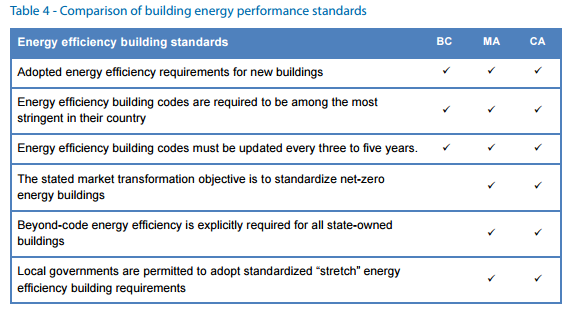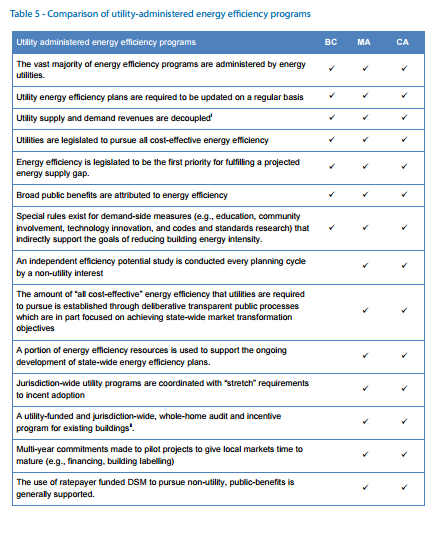How to accelerate energy efficiency in BC’s buildings: new report
Victoria, May 26, 2015 – British Columbia could significantly speed up progress on achieving energy-efficient buildings and homes by adopting the more stringent approaches used by the “green leader” states of California (CA) and Massachusetts (MA), according to research from the University of Victoria-led Pacific Institute for Climate Solutions (PICS).
Buildings account for 29 per cent of energy used in BC and about 12 per cent of GHG emissions. The report – Accelerating Energy Efficiency in BC’s Built Environment – Lessons from Massachusetts and California is the latest white paper from PICS, a collaboration of BC’s research-intensive universities.
The report compares the policy framework for advancing building energy efficiency in BC with MA and CA —which respectively rank number one and two for energy efficiency by the American Council for an Energy Efficient Economy.
The report found many policy similarities between the three jurisdictions including ambitious legislated greenhouse gas (GHG) emission reduction goals, a commitment to achieve super-efficient or zero net energy buildings through retrofits or construction, specific energy intensity targets for buildings, and a requirement that energy utilities use measures such as incentives and education to encourage consumers to use less energy, rather than simply increasing supply.
However, the report author Tom Berkhout says while MA and CA are successfully achieving a sustained market transformation toward super energy-efficient buildings, BC is lagging behind.
“BC has no procedures in place to regularly track and publicly report on its progress, while both states have monitoring, oversight and public accountability conducted by the utilities themselves and by outside agencies and stakeholders,” he says.
“These states also have climate policies that specify the amount of carbon reduction that will come from making buildings energy efficient, therefore reinforcing the accountability of these watchdogs to ensure this process keeps moving forward.”
Berkhout says BC’s 2008 Energy Efficient Buildings Strategy was a good start, but believes a lack of follow-up reporting and the sharp decline in programs to support the strategy has rendered it inert. He says MA and CA are now achieving energy bill savings for customers, despite rate increases, due to their more efficient buildings, and BC should use their model as a template.
Other factors cited for the states’ success include the updating of building code energy efficiency standards every three years, not every five like in BC;
subsidized whole-building energy audit and incentive programs; and “stretch building codes” that allow municipalities to adopt greater efficiency measures than the standard building code.
Currently only the City of Vancouver has this option in BC.
The report offers five sets of recommendations to accelerate a building sector transformation in BC.
- Revisit and expand the existing BC-wide energy efficiency vision for the built environment.
- Create multiple institutional triggers to ensure that energy efficiency objectives are kept on track.
- Appoint an expert, permanent and broad stakeholder representative Energy Efficiency Advisory Council to work with the province to develop, implement and ensure the delivery of an ambitious 20-year building energy efficiency strategy.
- Empower local communities via legislative changes to become niches for super-efficient buildings.
- Establish a transparent, deliberative process for setting utility energy savings targets that align with the province’s mitigation and market transformation goals.
See below for an at-a-glance comparison of BC, MA and CA climate and energy policies, building energy performance standards, and utility-led energy efficiency programs.
The full report is available here










